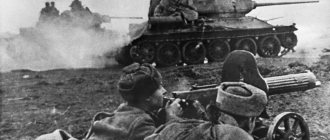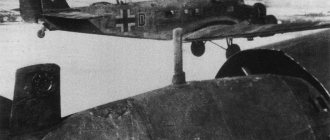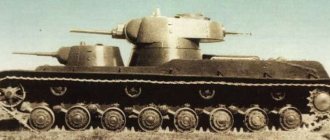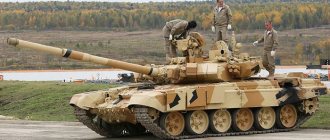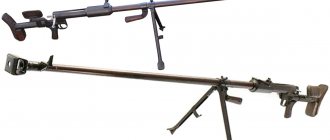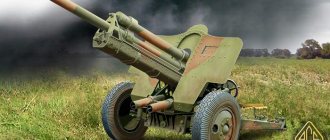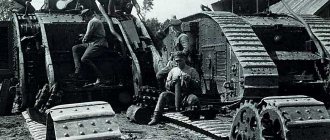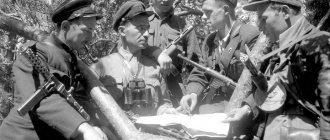The tragedy of General Pavlov. What killed the tank hero?
On July 4, 1941, in the village of Dovsk, Gomel Region, Belarusian SSR, Army General Dmitry Pavlov, Hero of the Soviet Union, who commanded the troops of the Western Front, was arrested. A participant in the Spanish Civil War, who only yesterday was considered one of the most successful and promising generals of the Red Army, suddenly found himself in disgrace with the Supreme Commander. Pavlov was taken to Moscow, to the Lefortovo prison. Somewhere in the past there were parades and exercises, victories and defeats, but there was nothing ahead...
District and Front Commander
Exactly one year before Nazi Germany attacked the Soviet Union, on June 7, 1940, Stalin appointed Colonel General of Tank Forces Dmitry Grigorievich Pavlov as the new commander of the forces of the Belarusian Special Military District.
Four days later, on July 11, 1940, the Belarusian Special Military District was renamed the Western Special Military District. The territory of the Smolensk region, which was previously part of the abolished Kalinin Military District, was annexed to it. In the defense system of the Soviet state, the district really played a very important, special role. It covered the western borders of the Soviet state and, after the inclusion of Western Belarus into the USSR and the occupation of Poland by the Nazis, directly bordered the territories controlled by Germany. In case of war, the district was the first to receive the attack of enemy troops.
On the territory of the district, preparations for war were in full swing - fortifications were being built, and personnel training for the infantry, cavalry, artillery, and tank forces was constantly being conducted. Naturally, the position of commander of the troops of the front-line district implied enormous responsibility and no one would have been appointed to it in the pre-war year.
Why did Stalin choose General Pavlov? At the time of his appointment as commander of the district troops, Colonel General Dmitry Pavlov was 42 years old. He received the Hero of the Soviet Union back in 1937 for battles in Spain, in which he participated as the commander of a tank brigade of the Republican Army and was known under the pseudonym “Pablo”. It was during the Spanish Civil War that Pavlov showed himself to be a talented commander, participating in the most important Jarama and Guadalajara operations.
In July 1937, Pavlov was summoned from Spain to Moscow and appointed deputy head of the Automotive Armored Directorate of the Red Army, and in November 1937, Corps Commander Pavlov was appointed head of the Automotive Armored Directorate of the Red Army. He held this position for almost three years and it was from this position that he was appointed to command the troops of the Belarusian Special Military District. The rise in my career was amazing. Pavlov went to Spain from the post of commander of a mechanized brigade, receiving the rank of brigade commander in 1935.
Pavlov received the rank of corps commander by stepping over one step - the rank of division commander. And Pavlov was appointed to the post of district commander, in fact having only the experience of commanding a tank brigade behind him. Pavlov never commanded an army, a corps, or even a division. It turns out that Pavlov was given the position “in advance”, hoping that the fearless tank commander would cope with the responsibilities of the commander of the district troops. And before the start of the Great Patriotic War, this was indeed the case - Pavlov established high-level training for the district’s personnel, especially the tank units that were dear to his heart. Even when he was the head of the Armored Directorate, Pavlov paid special attention to the development of tank forces.
Profession - Defend the Motherland
Of the 43 years of his life, Pavlov spent 26 years in military service.
In fact, it was in the army that his formation as a person took place. Dmitry Pavlov was born on October 23 (November 4), 1897 in the village of Vonyukh (now Pavlovo, Kologrivsky district, Kostroma region). The peasant son, Dmitry Pavlov, nevertheless, was a very capable guy - he graduated from 4 classes of a parochial school, a 2-class school in the village of Sukhoverkhovo, and then as an external student was able to pass exams for 4 classes of a gymnasium. But the First World War broke out and the 17-year-old boy asked to volunteer for the army. He enlisted in military service immediately after the outbreak of war, in 1914. Pavlov served in the Serpukhov 120th Infantry Regiment, then in the Alexandria 5th Hussar Regiment, in the 20th Infantry Regiment, 202nd Reserve Regiment, and rose to the rank of senior non-commissioned officer, which was very good, given the very young age of Dmitry and the fact that in the tsarist army the soldiers were not spoiled with stripes. In June 1916, the wounded Pavlov was taken prisoner by the Germans; he was released only in January 1919. Pavlov returned to his homeland and worked in the Kologriv district labor committee until, on August 25, 1919, he returned to his usual occupation, enlisting in the Red Army.
Pavlov began his service in the Red Army with “unsightly” positions - he was a fighter in the 56th food battalion, then a clerk in a food detachment. However, at the end of 1919 he was sent to a course in Kostroma, after which he began serving as a platoon commander in the 80th Cossack Cavalry Division. And Pavlov’s military career took off: he soon became a division commander, from October 1920 - an inspector for assignments in the 13th Army cavalry inspection, and after graduating in 1922. Omsk Infantry School named after the Comintern was appointed commander of the cavalry regiment of the 10th Cavalry Division. Twenty-four years old and a regiment commander - not Gaidar, of course, but still not bad.
Since June 1922, Pavlov fought against anti-Soviet partisans in the Barnaul district, being an assistant commander of the 56th cavalry regiment of the Altai separate cavalry brigade. In 1923, the brigade was transferred to Turkestan and Pavlov fought the Basmachi, commanding a fighter detachment and then the 77th Cavalry Regiment in Eastern Bukhara. Then Pavlov again became assistant commander of the rifle unit of the 48th Cavalry Regiment, then assistant commander of the 47th Cavalry Regiment. In 1928, Pavlov graduated from the Military Academy of the Red Army named after. M.V. Frunze and was appointed commander and commissar of the 75th Cavalry Regiment of the 5th Separate Kuban Cavalry Brigade, stationed in Transbaikalia. In this capacity, he took part in the armed conflict on the Chinese Eastern Railway in 1929.
After completing technical improvement courses for command personnel at the Military Technical Academy, Pavlov “retrained” as a tank driver and was appointed commander of the 6th mechanized regiment stationed in Gomel. So Pavlov began his service with Belarus, with which he found himself connected until the end of his days.
In February 1934, he was appointed commander and commissar of the 4th mechanized brigade, stationed in Bobruisk. Under the command of Pavlov, the brigade quickly became one of the best in the Red Army, after which Pavlov was noticed, promoted to brigade commander, and then awarded the Order of Lenin.
But it was Spain that really made Pavlov’s name. It was there that he received the Hero of the Soviet Union, after which he became a deputy of the Supreme Soviet of the USSR. It was the height of the “purges” of the Red Army command staff and Stalin needed new commanders. So the brigade commander of the tank brigade “jumped” to the position of head of the Armored Directorate, and then became the commander of the district.
As head of the Armored Directorate, Pavlov made a great contribution not only to equipping the Red Army with new combat vehicles, but also to rethinking the strategy for using tank forces. He believed that the role of tank forces in modern warfare would grow rapidly and insisted on the production of more powerful and maneuverable tanks. But the general’s dream was realized after his death, when T-34 tanks began to be mass-produced for the Red Army.
In 1940, I came to Kharkov to look at the tests of the T-34 tank. This tank was tested by the commander of the armored forces of the Red Army, Pavlov himself. This is a famous man, a hero of the Spanish War. There he stood out as a combat tanker, a fearless man who knew how to operate a tank. As a result of this, Stalin appointed him commander of the armored forces. I admired how he literally flew through the swamps and sands in this tank...,
- Nikita Khrushchev recalled about Pavlov.
War and death
On June 22, 1941, Nazi Germany attacked the Soviet Union.
The day before the attack, the Western Special Military District, commanded by Dmitry Pavlov, was transformed into the Western Front. Pavlov himself by this time, from February 1941, already held the rank of army general. His career was going up and if not for the circumstances of the first month of the war, perhaps Pavlov would have become a marshal. Almost from the first days of the war, the troops of the Western Front began to suffer defeat after defeat. The Nazis were rapidly moving east, towards Minsk. No matter how Pavlov tried to stop the advance of the Nazis, it did not work. In desperation, the district commander threw bombers against tank columns without fighter cover, heading to certain death. But the heroism of the pilots, tank crews, and infantrymen alone could not stop the enemy.
The main reason for the Nazis’ breakthrough to Minsk was the presence of a “window” in the North-Western Front, through which the 3rd Panzer Group under the command of Hermann Hoth managed to break through. This “window” was formed due to the fact that Hitler’s tank groups defeated the 8th and 11th armies defending the border and entered the Baltic states. Hermann Hoth's tank group struck the rear of the Western Front. The 29th Territorial Rifle Corps of the Red Army was supposed to resist the Nazis here. In fact, the 29th Rifle Corps was the former army of the Republic of Lithuania.
The Soviet command hoped that if Lithuanian officers were replaced by Soviet commanders, the “class-close” mass of Lithuanian soldiers – “workers and peasants” – would turn into Red Army soldiers. But that did not happen. The Lithuanian army, when the Nazis began to attack, fled, and part of it generally killed the commanders and turned their weapons against the Soviet regime.
A week after the start of the war, on June 28, 1941, enemy troops captured Minsk, the capital of the Belarusian SSR. Stalin, having learned about the capture of Minsk by the Nazis, was furious. The fall of the Belarusian capital actually sealed the fate of Army General Pavlov, although the war lasted only a week.
In the defeat of the Western Front, Pavlov was no more guilty than the guilt of those who were in Moscow, in higher military and government positions. Many other Soviet military leaders suffered no less severe defeats - after all, Odessa, Kyiv, Sevastopol, Rostov-on-Don, and many other cities fell.
On June 30, 1941, a day after the fall of Minsk, Pavlov was called to Moscow, but on July 2 he was returned to the front. However, on July 4, 1941, he was arrested and again taken to Moscow - this time for good. Together with Pavlov, the chief of staff of the Western Front, Major General V.E., was arrested. Klimovskikh, chief of front communications, Major General A.T. Grigoriev and the commander of the 4th Army, Major General A.A. Korobkova.
Then everything developed according to the usual and “tested” scenario. Initially, they tried to accuse Pavlov and his generals of treason and “attach” them with participation in an anti-Soviet conspiracy, but then they decided that this was too much - Pavlov really was an honest warrior. Therefore, Pavlov and his deputies were tried under the articles of “negligence” and “failure to fulfill official duties.” They were accused of cowardice, alarmism and criminal inaction, which led to the defeat of the troops of the Western Front.
By the Supreme Court of the USSR D. G. Pavlov, V. E. Klimovskikh, A. T. Grigoriev and A. A. Korobkov were stripped of their military ranks and sentenced to death. On July 22, 1941, Dmitry Pavlov was shot and buried at a training ground in the village of Butovo. Thus ended the life of a brave and honest soldier, whose only guilt was that he may have found himself in the wrong place, having received an entire district - the front - after the experience of commanding a brigade.
In 1957, Pavlov was posthumously rehabilitated and restored to military rank. His native village was renamed in his honor; a street in Kologriv is named after Pavlov.
Commanders [edit]
- Army General Dmitry Gennadyevich Pavlov (until June 28, 1941; shot).
- Andrei Eremenko (June 28 - July 2, 1941)
- Marshal Semyon Konstantinovich Timoshenko (July 2 - September 1941)
- Lieutenant General Ivan S. Konev [promoted to colonel general in September 1941] (September–October 1941; August 1942–February 1943)
- General Georgy Konstantinovich Zhukov (October 1941 - August 1942)
- Colonel General V.D. Sokolovsky (general in August 1943) (February 1943 - April 1944).
CONTENT
- 1 Operational history 1.1 Front location June 22, 1941
- 1.2 Defeat at the turn of June 22–28
- 1.3 Reorganization of the Western Front June 28 - July 2
- 1.4 German advance to the Dnieper 2–9 July
- 1.5 Smolensk pocket
- 1.6 The offensive of the Soviet Spirituality
- 1.7 Vyazemsky pocket
- 1.8 Assault on Moscow
- 1.9 Later operations in World War II
- 1.10 Status today
